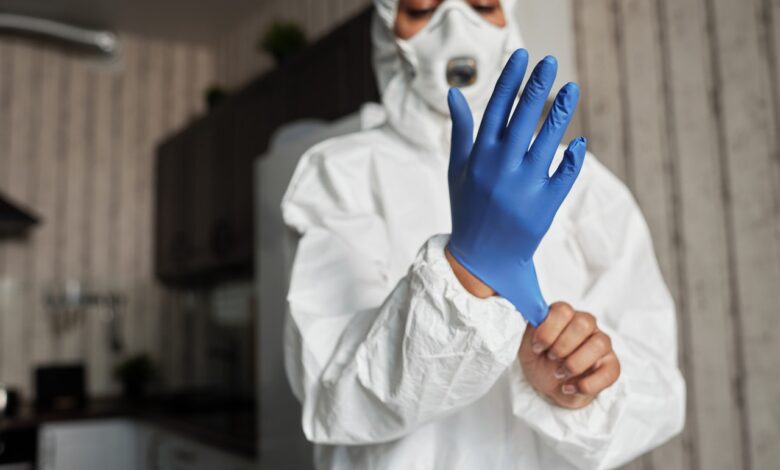Safe disinfecting and cleaning of surfaces contaminated with biological fluids

Biological fluids are the most epidemiologically dangerous pollutants found on surfaces in both health care facilities and private apartments. These fluids include blood and body fluids mixed with blood, blood serum, excretions (sputum, liquid feces mixed with urine or water, vomit, urine, liquid after rinsing the throat, saliva, semen, vaginal secretions, etc.). It’s a well-known fact that if people are planning to live or stay in an apartment where someone died or was killed, it’s necessary to carry out professional cleaning with the help of crime scene cleanup services.
The relevance of thorough disinfection of surfaces contaminated with biological fluids
Blood contaminants are the main hazard due to the possible transmission of parenteral (blood contact) infections such as hepatitis B, C, and HIV, which can have extremely life-threatening consequences. There is also another dangerous infection known as Ebola virus disease which is also transmitted through direct contact with the blood or body fluids (eg, urine, feces, vomit, saliva, sweat, tear fluid, and semen) of an ill person or through exposure to objects (eg, needles) that have been contaminated with infected blood or other body fluids. Studies show that the highest concentration of the Ebola virus is found in vomit, blood, and feces compared to saliva, sweat, and tear fluid, which leads to the need for thorough disinfection.
Numerous scientific publications and current regulatory and methodological documents state that effective disinfection of surfaces can be performed only after a thorough crime scene cleanup from visible contamination. A large amount of nutrient load inactivates disinfectant solutions, making the disinfection process ineffective.
General scheme for cleaning and disinfection of surfaces contaminated with biological fluids
The general scheme for cleaning and disinfection of surfaces contaminated with biological fluids is the same and is typical for all the above types of contamination. The fundamental difference lies in the initial stage of processing, which directly depends on the amount of spilled liquid on the surface:
§ small pollution (drops or splashes) are disinfected by 2-time disinfection, combining the first disinfection with mechanical cleaning
§ crime scene cleanup services deal with large blood spills by neutralizing them in several stages: preliminary disinfection of contamination is carried out, then the mechanical cleaning, and only after that the final disinfection of the surface is carried out.
In the presence of large blood spills of blood and other biological fluids, crime scene cleanup services use solid (granular or powdered) disinfectants injected directly into the contamination. The amount of solid disinfectant introduced into the spill should be determined by its sorption capacity. The amount of disinfectant should be injected to ensure that the spill is completely absorbed.
In the case of small spills, it is possible to pre-fill the biological fluid with a disinfectant solution for the duration of disinfection, then mechanically remove contamination (for example, with rags or paper napkins) and complete the disinfection with final disinfection.
Since biological fluids contain protein and fatty substances, products containing surfactants that provide an effective washing effect should be used for disinfection.
Remember, if you don’t take care of proper cleaning after the death of a person, it will be impossible to live in the apartment.




